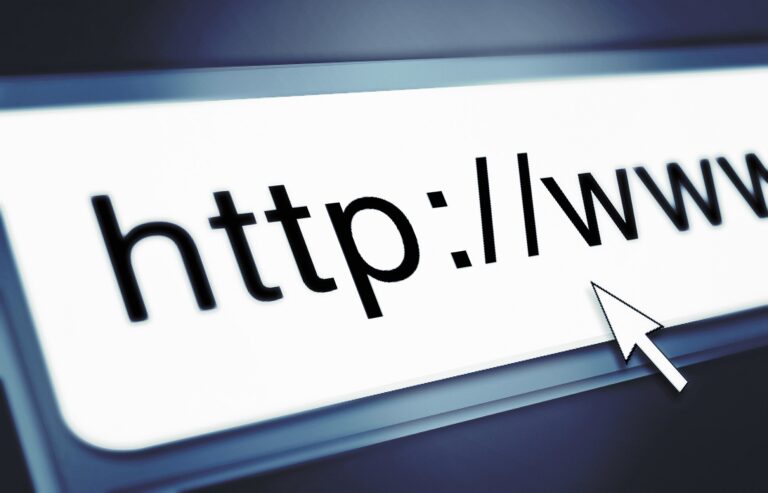Personality-Based Communication Platforms: 7 Options For Different Personality Types

Did you know that people with different personality types tend to communicate in strikingly different ways? According to recent research, our personality traits significantly shape how we approach conversations, collaboration, and feedback. For instance, extroverts are more likely to initiate group discussions, while introverts prefer reflection before sharing ideas. This natural diversity in communication styles means that no single tool can fit all needs—especially in today’s digital workspaces.
With hybrid and remote work environments on the rise, the demand for versatile communication tools has never been greater. Many teams now rely on digital platforms for everyday interactions, making it essential to have solutions that accommodate various personality types. Whether it’s an introvert who values deep, distraction-free focus or an extrovert who thrives on quick video calls, finding the right platform can boost both productivity and morale. In fact, using communication tools tailored to different personalities helps ensure that everyone feels comfortable and engaged, making work interactions more natural and effective.
In this article, we’ll explore 7 Personality-Based Communication Platforms, each matched with a specific personality type, to help you find tools that support every team member’s strengths. From goal-oriented drivers to creative thinkers, there’s a platform that’s perfectly suited to your personality—or that of your teammates. Let’s dive into the best tools for every kind of communicator!
1: The Analytical Thinker – Data-Driven and Detail-Oriented
Personality Overview:
Analytical thinkers are meticulous and driven by logic and data. They thrive in environments where they can dissect information, organize details, and find clarity. Known for their structured approach to problem-solving, these individuals often prefer clear, precise communication and a streamlined workflow that minimizes distractions. Analytical thinkers value tools that help them categorize information and retrieve data easily, making them well-suited for platforms that offer extensive organizational capabilities and granular search options.
Recommended Platform: Microsoft Teams or Slack
Why It Works:
Microsoft Teams and Slack are ideal choices for analytical thinkers due to their robust organizational features and flexible communication options. Both platforms allow users to create channels or threads, enabling precise topic categorization that keeps conversations organized and accessible. Additionally, the search functionalities in these platforms are powerful, allowing users to locate past messages, files, or keywords quickly—perfect for someone who often revisits details or references past decisions. Microsoft Teams integrates seamlessly with other Microsoft 365 apps, providing a cohesive workspace for document management, while Slack offers custom workflows, reminders, and the ability to connect with numerous third-party apps, tailoring the experience for detail-oriented users.
Best for:
- Structured Communication: The ability to create and maintain specific channels or threads aligns with an analytical thinker’s preference for clarity and organization.
- Tracking Projects: Both Microsoft Teams and Slack offer tools for project tracking, allowing users to create task lists, set deadlines, and integrate with project management tools like Trello or Asana.
- Accessing Historical Data: With advanced search and archiving capabilities, these platforms ensure that past conversations and documents are readily accessible for future reference, a must-have for the detail-driven mindset of an analytical thinker.
Section 2: The Big-Picture Visionary – Strategic and Future-Focused
Personality Overview
Big-picture thinkers are natural visionaries—strategic, forward-looking, and skilled at seeing possibilities others may miss. These individuals thrive when exploring new ideas, shaping future goals, and focusing on broad, high-level plans rather than the minutiae. Their preference for innovation over detail makes them excellent at rallying teams around a shared vision, though they may sometimes lose track of the smaller steps needed to bring that vision to life.
Recommended Platform: Asana or Miro
Why It Works
Platforms like Asana and Miro are tailor-made for the big-picture visionary. These tools offer flexible, visually oriented layouts that help visionaries structure and communicate ideas without getting bogged down by excessive detail. Asana’s project view options—like timeline, calendar, and board views—allow visionaries to set high-level goals and track milestones across teams, ensuring alignment with broader objectives. Miro’s digital whiteboarding capabilities, on the other hand, offer a space for unstructured brainstorming and collaborative ideation, making it ideal for visionary leaders who thrive on creative freedom.
With Asana, visionaries can share overarching goals and assign tasks in a way that aligns with strategic objectives, while Miro provides an open-ended, visual space to map out ideas, create mind maps, and make complex ideas accessible for teams.
Best for
Big-picture thinkers will find these platforms especially helpful for:
- High-level brainstorming: Miro offers flexibility for idea-sharing and sketching out future-focused plans, which makes it perfect for the early stages of ideation.
- Vision setting: Asana’s goal-setting features enable visionaries to break down large-scale objectives into actionable milestones, giving teams a clear roadmap without needing to focus on every detail.
- Team alignment: Both platforms facilitate team collaboration and alignment, empowering visionary leaders to keep teams motivated and working toward a common purpose.
Section 3: The Social Connector – Outgoing and Relationship-Oriented
Personality Overview:
Social connectors are the lifeblood of team morale. People-focused, collaborative, and enthusiastic, they thrive in environments where they can build relationships and maintain close connections with others. These individuals are natural networkers, often infusing energy and cohesion into teams with their ability to bring people together and promote open dialogue. Social connectors feel most engaged when they can interact in real-time, exchange ideas freely, and be a supportive presence within the group.
Recommended Platform: Zoom or Microsoft Teams
Why It Works:
Both Zoom and Microsoft Teams offer the features that social connectors need to feel fully engaged and able to express themselves authentically. With robust video capabilities, they allow social connectors to maintain eye contact, interpret body language, and experience the nuance of in-person conversation, even if they’re working remotely. Zoom’s easy-to-join meetings and Microsoft Teams’ integration with Office 365 make it simple to hop into discussions, share screens, and collaborate dynamically. Additionally, these platforms support chat functions, enabling connectors to keep conversations going throughout the day, whether it’s a quick check-in or a group brainstorm.
Best for:
- Team Meetings: Ideal for regular team syncs and quick huddles where face-to-face communication is valuable.
- Personal Check-Ins: Allows for one-on-one video or voice calls, helping social connectors stay in tune with colleagues and strengthen relationships.
- Building Camaraderie in Remote Teams: Virtual backgrounds, emojis, and chat functions provide opportunities for self-expression and friendly banter, fostering a collaborative and inclusive atmosphere.
By choosing platforms like Zoom and Microsoft Teams, social connectors can bridge the distance and keep team spirits high, ensuring every member feels seen, heard, and valued.
Section 4: The Independent Thinker – Self-Reliant and Focused
Personality Overview
Independent thinkers thrive on autonomy and value uninterrupted focus. Often more introspective and self-reliant, these individuals prefer to work in ways that allow them to reflect deeply before responding or making decisions. Independent thinkers are typically found to be methodical and thoughtful, and they excel in environments that allow them to manage their own time and workflow without constant check-ins or disruptions.
Recommended Platform: Twist or Notion
Twist and Notion are ideal communication platforms for independent thinkers, as they are both structured to facilitate asynchronous communication and organized, distraction-free work environments.
Why It Works
For independent thinkers, platforms like Twist and Notion provide a valuable alternative to the often chaotic, real-time communication seen in traditional messaging apps. Twist, for example, organizes conversations into structured threads, allowing users to engage in discussions without the pressure of instant responses. Similarly, Notion’s versatile workspace enables users to create detailed project notes, organize resources, and track their work in ways that support deep focus.
Both tools encourage intentionality in communication, giving users the time and space to consider their responses before replying. This setup reduces unnecessary interruptions, creating an environment where independent thinkers can fully immerse themselves in tasks without feeling overwhelmed by continuous pings or the need to respond immediately.
Best For
Twist and Notion are best suited for:
- Solo Tasks: Independent thinkers can work through tasks on their own timeline, allowing for deeper focus and efficiency.
- Concentrated Work: By minimizing distractions, these platforms support prolonged periods of uninterrupted work, which is crucial for analytical and reflective individuals.
- Thoughtful Discussions: Asynchronous messaging allows for more deliberate communication, ensuring responses are well thought out, rather than reactionary.
Twist and Notion enable independent thinkers to work at their best by creating a workspace that honors their need for autonomy, concentration, and carefully considered communication.
Section 5: The Empathetic Listener – Compassionate and Supportive
Personality Overview:
Empathetic listeners are the heart of any team, providing emotional support and a compassionate ear to colleagues. These individuals are often emotionally intuitive, picking up on subtle cues and ensuring everyone feels heard and valued. Empathetic listeners create a safe, welcoming environment where team members can express their concerns and ideas freely, which is vital for overall team morale and cohesion.
Recommended Platform: Voxer or Slack with voice features
Why It Works:
Empathetic listeners thrive in environments where communication can feel more personal and less transactional. Platforms like Voxer and Slack, especially with voice messaging options, allow for richer, more nuanced communication that goes beyond text. With voice messaging on these platforms, empathetic team members can listen actively to the tone, pace, and emotion in others’ voices—key details that text alone can miss. Voxer’s walkie-talkie style also encourages asynchronous communication, which allows thoughtful replies rather than rushed responses. Meanwhile, Slack with voice features gives the option of short, heartfelt responses in a familiar interface, balancing professional interaction with empathy.
Best for:
- Sensitive Discussions: For topics that require careful handling, like performance feedback or personal challenges, voice messages provide a gentler way for empathetic listeners to connect.
- Team Support: Empathetic listeners often check in on team members, and these platforms help keep these interactions organic without feeling intrusive.
- Emotional Well-Being: Empathy plays a crucial role in team wellness. By offering an approachable way to talk and listen, these platforms help maintain positive mental health in the workplace.
Section 6: The Decisive Driver – Goal-Oriented and Assertive
Personality Overview:
Decisive drivers are goal-oriented individuals who thrive on getting things done quickly and efficiently. Known for their assertiveness and strong focus on results, they are natural leaders who take initiative, make fast decisions, and value productivity. Decisive drivers are often found pushing projects forward, setting priorities, and rallying teams around common goals. They dislike unnecessary delays and prefer clear, actionable plans that move projects along efficiently. For them, communication tools must support rapid task execution, real-time updates, and seamless project oversight.
Recommended Platform: Trello or ClickUp
- Trello: Trello’s card-based system allows decisive drivers to visually organize tasks and keep track of project progression at a glance. With simple drag-and-drop functionality, task lists, and color-coded labels, Trello provides the flexibility to prioritize and reorganize tasks quickly. Real-time collaboration features also make it easy to delegate and track assignments, aligning well with the driver’s need for rapid updates and progress monitoring.
- ClickUp: ClickUp offers a more detailed and customizable approach with multiple view options, including Gantt charts, lists, and boards. It’s built for productivity, with tools like time tracking, goal-setting, and automated reminders that support swift decision-making and results-focused workflows. ClickUp’s ability to assign tasks, set dependencies, and track deadlines lets decisive drivers maintain control over project timelines and progress.
Why It Works:
Both Trello and ClickUp support the decisive driver’s natural need for speed, structure, and visible progress. These platforms provide clear, straightforward interfaces where users can prioritize tasks, track deadlines, and assign responsibilities quickly. Trello’s visual approach keeps projects neatly organized, while ClickUp’s advanced features offer the ability to set complex workflows. Features like custom notifications, checklists, and due dates keep the entire team on the same page, ensuring that no critical tasks fall through the cracks.
Best for:
- Efficient task management: Organize and streamline tasks to stay on track with project goals.
- Prioritization: Quickly reorder and assign tasks based on urgency and importance.
- Decision-making: Enable swift, informed decisions by centralizing project details and timelines.
Section 7: The Creative Thinker – Innovative and Spontaneous
Personality Overview:
Creative thinkers are often characterized by their adaptability, innovation, and a knack for seeing the world through a different lens. They thrive in environments that encourage out-of-the-box thinking, where spontaneity and imagination can flourish. These individuals are typically open-minded and flexible, enabling them to pivot ideas and approaches based on new information or insights. They enjoy exploring diverse perspectives and often find inspiration in unexpected places, making them valuable contributors to brainstorming sessions and collaborative projects.
While they might sometimes appear disorganized or scattered, creative thinkers bring a unique energy that can inspire and motivate teams to pursue bold and unconventional solutions. They excel in dynamic settings where their creativity can be harnessed to address challenges and drive innovation.
Recommended Platform: Mural
One of the standout platforms for creative thinkers is Mural. This digital workspace is designed for visual collaboration, making it an ideal tool for those who think in images, concepts, and connections rather than just words. Mural allows teams to create interactive canvases that can incorporate sticky notes, drawings, diagrams, and images—all of which are perfect for capturing spontaneous ideas.
Why It Works:
Mural stands out for its robust brainstorming and whiteboarding capabilities, which provide a visual outlet for creative thinkers to express their ideas. Here’s why it works particularly well for this personality type:
- Visual Collaboration: Creative thinkers often think in visuals rather than text, and Mural’s canvas allows for drawing, sketching, and visually mapping out concepts. This facilitates brainstorming sessions where ideas can be quickly illustrated and refined in real-time.
- Templates for Inspiration: Mural offers a variety of pre-designed templates tailored for brainstorming, design thinking, and agile project management. These templates help jumpstart creativity and provide structure without stifling innovation.
- Real-Time Collaboration: The platform enables multiple users to interact on the same canvas simultaneously, making it easy for teams to build on each other’s ideas in a spontaneous and dynamic environment. This immediate feedback loop is crucial for creative thinkers who thrive on collaboration.
- Integration with Other Tools: Mural integrates seamlessly with tools like Slack and Microsoft Teams, allowing for easy communication and idea sharing across platforms. This connectivity enhances workflow and ensures that creative ideas are captured and followed through.
Best for:
Mural is particularly well-suited for:
- Creative Brainstorming: Whether generating ideas for a marketing campaign, product development, or team initiatives, Mural provides an engaging space for brainstorming sessions that foster creativity.
- Idea Generation: With its tools for sketching and visual representation, users can quickly capture fleeting thoughts and concepts, transforming them into actionable ideas.
- Collaborative Projects: Mural facilitates teamwork by enabling different personalities to contribute their unique insights, making it ideal for workshops, design sprints, and other collaborative efforts where creativity is key.
In conclusion, Mural empowers creative thinkers to unleash their innovative potential, providing the flexibility and tools they need to collaborate effectively and inspire their teams. By harnessing the power of visual communication, creative thinkers can turn their spontaneous ideas into impactful solutions.
Finding the Perfect Match
In today’s diverse work environment, the effectiveness of communication tools can greatly influence team dynamics and productivity. Choosing the right platform that aligns with the unique personality styles of team members is not just about functionality; it’s about enhancing collaboration and fostering a culture of understanding. Each personality type brings its strengths and challenges to the table, and when communication tools are tailored to these characteristics, they facilitate smoother interactions, clearer messaging, and a more cohesive workflow.
For instance, analytical thinkers thrive in structured environments where details matter, while empathetic listeners benefit from platforms that allow for deeper emotional connections. By recognizing and embracing these differences, organizations can empower their teams to communicate more effectively and efficiently.
We encourage you to explore the platforms mentioned in this article. Take the time to experiment with their features and see which ones resonate most with your team’s communication style. Don’t hesitate to gather feedback from team members to understand how well these tools support their unique workflows. By actively seeking out the best-fit communication solutions, you can create a more harmonious and productive work environment that values each individual’s contributions. Share your experiences and insights with others to foster a community of collaboration and support!
And there you have it—seven communication platforms, each designed with unique personality types in mind. Whether you’re an introvert who thrives in one-on-one chats or an extrovert who loves group collaborations, there’s a tool out there just for you.
Remember, communication is all about connection. The right platform can make conversations easier, more fun, and even help you shine in ways you didn’t expect. So, don’t be afraid to explore and experiment!
At the end of the day, what matters most is how comfortable you feel expressing yourself. A good communication tool should make that simple, no matter who you are. So go ahead—pick one that speaks your language. After all, the best connections start with a platform that understands you.
Here’s to happier, smoother conversations—no matter your style!

Rashed I.
Rashed is the SEO and Content Marketing Specialist at Sinense. He also excels in conversion copywriting. When not working, he explores difference places around the world as an avid traveler and creates art!



